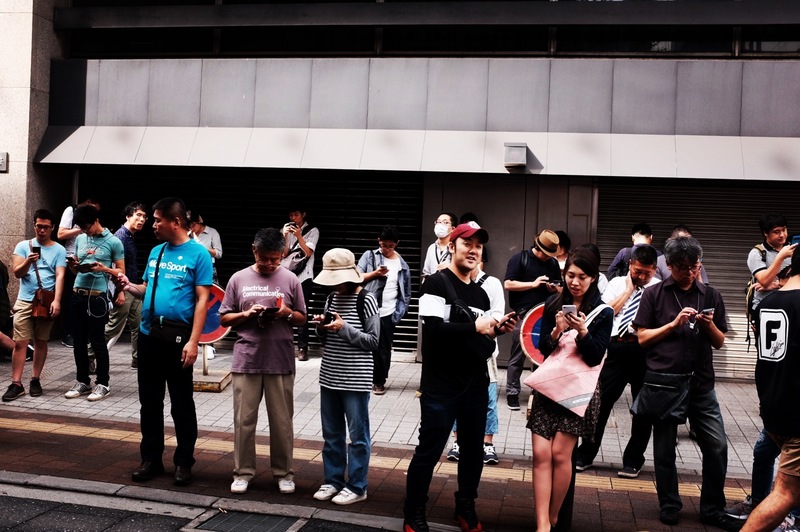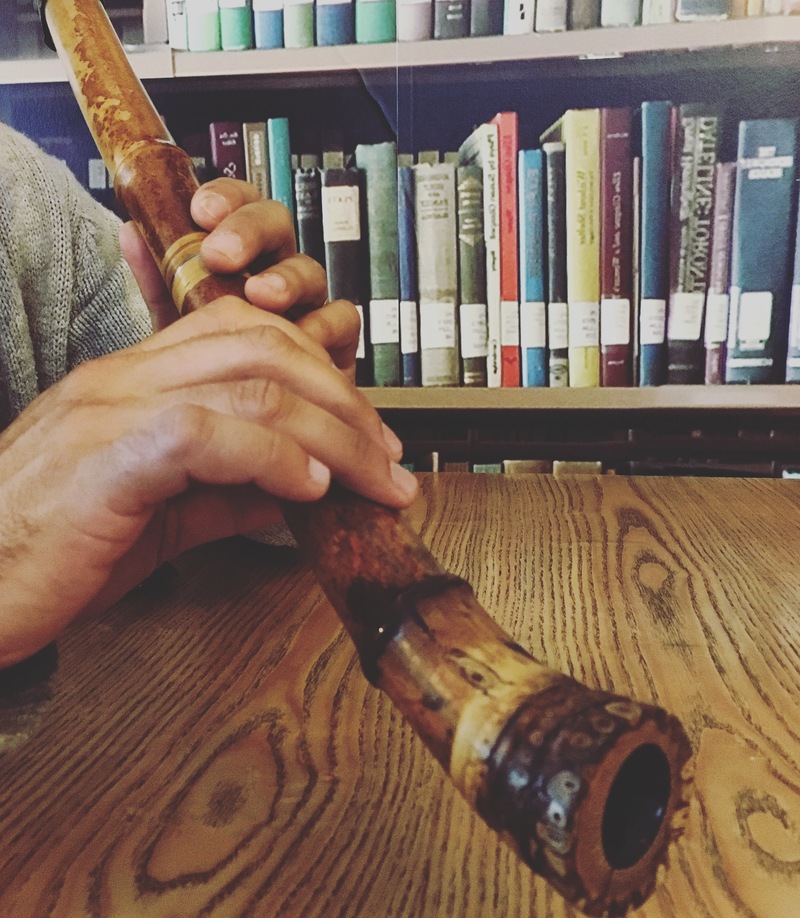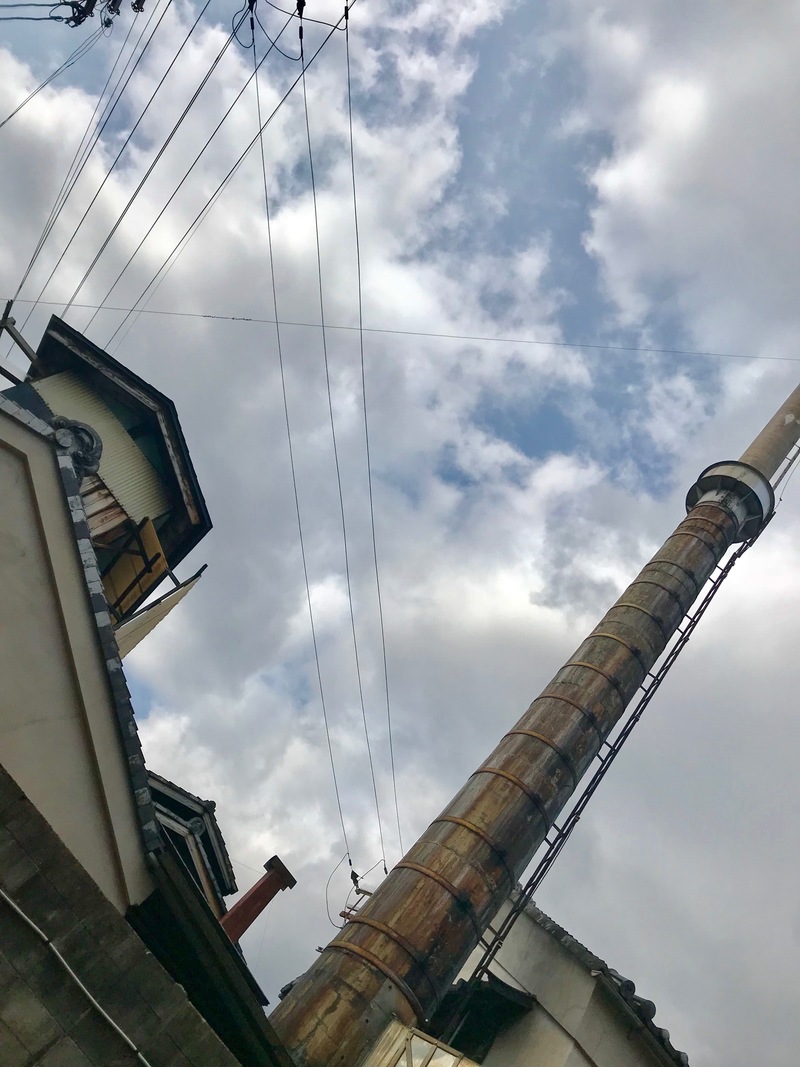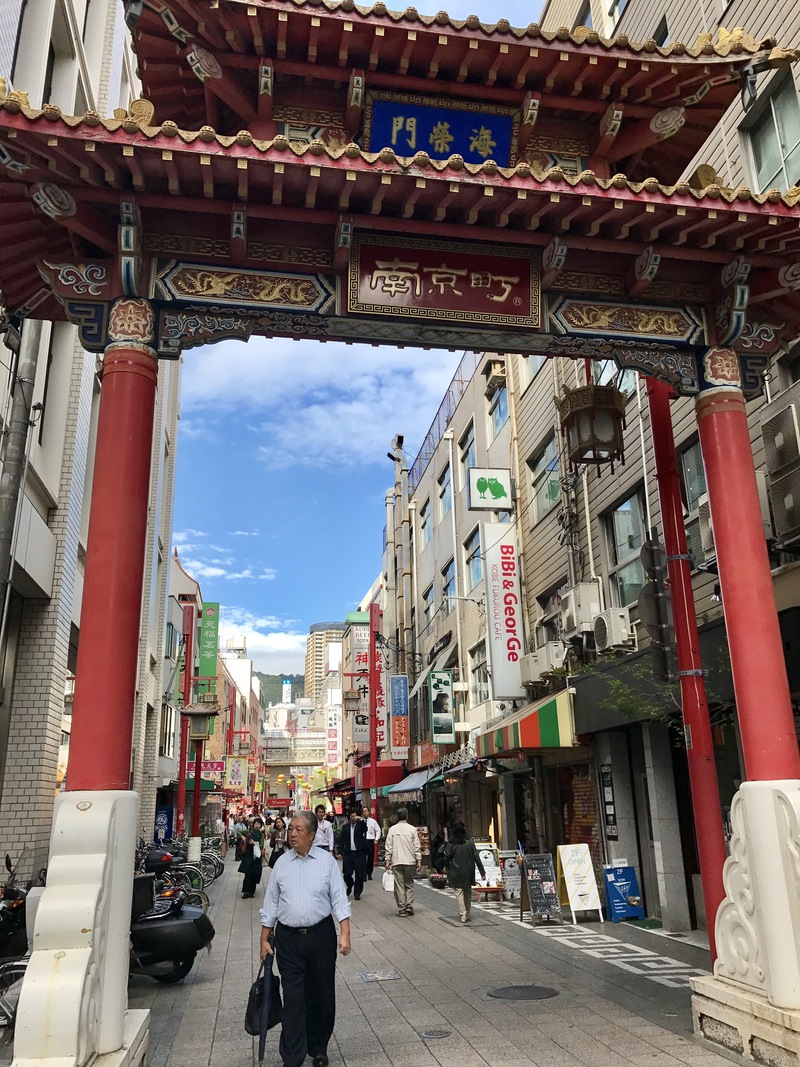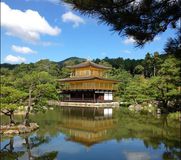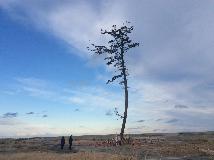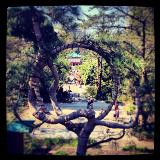The shakuhachi is an end blown flute that has a long history in Japan. Most famously, it was connected to a group of mendicant Buddhist monks in the Edo era, called Komuso, or the “Priests of Nothingness”, who played the shakuhachi for alms in search for enlightenment. While much of their history is shrouded in mystery, they left behind a repertoire of musical pieces called Honkyoku, or “Original Pieces”. It is debatable whether the Komuso viewed their Honkyoku as music, but rather played them as Buddhist sutras, through which they would engage in suizen (blowing meditation).
This is a recording of part of a lesson between teacher and student for the piece Shika no Tone (Crying of the deer). It is the only duet in the Honkyoku repertoire and is widely known, having originated in Shojuken temple in Nagasaki in the 18th century. The piece is set in autumn when the voice of the male deer calls for a female mate. It is also said to represent the feelings of lonesomeness and sadness of a priest listening to the distant cries of a deer.
In this recording, we hear the beginning of a student learning this piece for the first time. Student and teacher begin by playing the duet together, the teacher is playing the first part and the student the second. Soon, however, the student falters and the teacher starts playing with him but again the student falters and the student then listens to his teacher playing the phrase and tries to imitate it. At 1.35, the teacher moves on entering into his next phrase strongly to move the piece forward. In the next phrase, the student makes a mistake and omits a technique, which the teacher verbally expresses but then plays correctly. The student replays it and the teacher exclaims “good”. The student continues but the teacher interrupts again and gives a description of his own teacher who played this specific part using a variety of different techniques. In the next phrase, the student struggles but the teacher allows the student to continue falteringly and exclaims “good, good”. At 4.03, the phrase requires a technique called muraiki (uneven or thrashing breath) and the teacher gives some verbal instruction again but the student falters and loses his way. The teacher demonstrates and the student imitates him as he is playing but then stops playing to watch and listen the teacher and then in turn plays. The teacher gives some specific points but as the student continues to falter he gives a rather abrupt description about how the student is misunderstanding this phrase and how it should be played. The student repeats the phrase a number of times and the teacher says “yes”.
What is interesting about this example of a shakuhachi lesson is the emphasis on learning through imitation. The student attempts to capture his teacher’s sound and reproduce it rather unsuccessfully. When he falters the teacher reproduces the sound for the student imitate. When he falters there is a short verbal explanation but there is a sense of moving through the piece, of not resting too long on those parts that are not understood.
